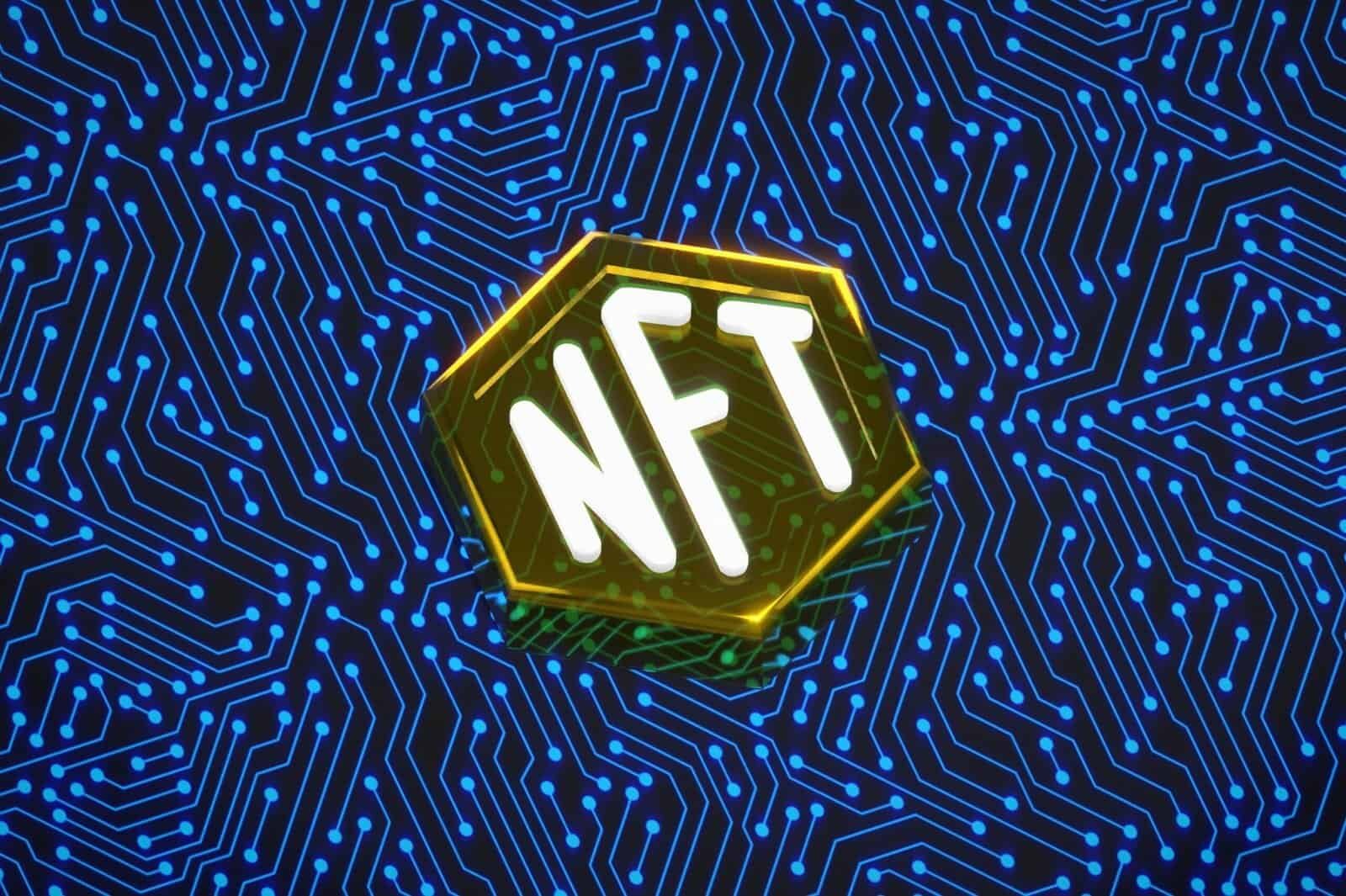Have you ever wanted to compare NFT listings across every marketplace and blockchain without opening five different tabs and juggling multiple wallets?
Genie – An NFT Aggregator Pulling Listings Across Multiple Marketplaces And Blockchains
Genie is an NFT aggregator designed to collect and present NFT listings from numerous marketplaces and blockchains in a single interface. You can use it to scan prices, compare listings, and execute purchases or sales while removing much of the friction that comes with managing multiple marketplace UIs.
What an NFT aggregator does and why it matters
An NFT aggregator pulls together data and actionable listings from many NFT marketplaces so you can see the best prices, available items, and market activity without switching platforms. You’ll save time and reduce the risk of missing opportunities by having cross-market data in one place. Aggregators also enable features like best-price routing, bundled purchases, and cross-listing detection that individual marketplaces typically don’t provide.

How Genie works at a high level
Genie operates by indexing listings from public marketplace APIs and by watching blockchain events directly. You’ll notice that it harmonizes varied listing formats into a single normalized record, making comparisons intuitive. Once you request to buy or sell, Genie interacts with the underlying marketplace smart contracts or offers optimized routes to complete the trade.
Aggregation and indexing
Genie continuously queries marketplace APIs and listens to on-chain events to capture new listings and fills. This approach helps ensure that you see recent listings and price changes. The aggregator also deduplicates entries and tracks listing status so you don’t get misled by stale offers.
Normalization and deduplication
Marketplaces often format metadata and pricing differently, and you’ll see those differences normalized into a common structure on Genie. Normalization includes converting different token standards, standardizing currency display, and aligning listing statuses. Deduplication removes multiple records for the same offer so you can focus on the best active listings.
Cross-chain and cross-market matching
Genie matches listings across various blockchains and marketplaces, which allows you to compare Ethereum, Polygon, and other chain listings side by side. You’ll benefit from seeing offers in a unified currency view and from tools that recommend the cheapest execution path for a given NFT.
Transaction routing and execution
When you instruct Genie to buy or sell, it can route your transaction to the marketplace that offers the best price or to a path that minimizes gas and fees. Genie either calls marketplace smart contracts directly or uses batching techniques to reduce transaction costs. You’ll often see the final on-chain transaction details, so you can verify how the trade was settled.
Supported marketplaces and blockchains
You’ll want a clear picture of where Genie pulls data from. Below is a representative table that outlines common marketplaces and blockchains an aggregator like Genie typically supports. Note that exact support can change over time, so consult the live app or docs for current coverage.
| Marketplace / Protocol | Typical Chains Supported | Notes |
|---|---|---|
| OpenSea (Seaport) | Ethereum, Polygon | One of the largest sources of listings; often uses Seaport protocol. |
| Blur | Ethereum | Concentrates on high-volume trading; often shows aggressive on-chain listings. |
| LooksRare | Ethereum | Community-driven marketplace with its own fee structure. |
| X2Y2 | Ethereum | Alternative marketplace with unique listing formats. |
| Magic Eden | Solana, Ethereum | Leader on Solana; also expanding into EVM chains. |
| Immutable X marketplaces | Immutable X | Layer-2 for gas-free NFT minting and trades. |
| Rarible | Multiple chains | Offers cross-chain listings and creator-focused features. |
| Protocols (e.g., Wyvern, Seaport) | Ethereum | Aggregator connects to multiple marketplace smart contracts. |
| Other marketplaces (regional or specialized) | Varies | Aggregators may include niche or emerging markets over time. |
| Blockchain | Typical Use Cases |
|---|---|
| Ethereum | High-value collections and most blue-chip NFTs. |
| Polygon | Lower-fee trading and many secondary market listings. |
| Solana | Fast and low-cost NFT ecosystem (Magic Eden, etc.). |
| Immutable X | Gasless secondary trading for certain projects. |
| Layer-2s / sidechains | Cost-effective trading and growing liquidity pools. |

Key features you’ll find useful
Genie offers several features to streamline how you browse, buy, and sell NFTs. Each feature is built to help you make faster, more informed decisions across marketplaces.
Unified search and advanced filters
You’ll be able to search by collection, token ID, traits, price range, and listing type across all supported marketplaces. Advanced filters let you exclude certain markets, require specific currency types, and sort by gas-optimized routes or quickest settlement.
Best-price discovery and smart order routing
Genie surfaces the best-price listing across marketplaces and will often suggest a smart route to execute the purchase. You’ll see a breakdown of marketplace fees, gas cost estimates, and the final out-the-door price. This helps you choose whether to accept the routed execution or to use another marketplace directly.
Cross-listing detection and price alerts
If an NFT is listed on multiple marketplaces at different prices, Genie highlights those discrepancies and can send alerts when the floor price or a specific token reaches your target. You’ll never miss a potential arbitrage opportunity or target buy again if you set up notifications.
Batch-buy and bundle management
Genie commonly supports buying multiple tokens in a single transaction when the underlying marketplaces allow it. You’ll save on gas and reduce the number of transactions, especially when collecting multiple NFTs from the same collection or executing a set purchase.
Gas optimization and transaction batching
The app often includes gas estimates and a “best gas route” option that minimizes network fees by choosing when and how to send transactions. You’ll have options to prioritize speed or to save on cost during less congested periods.
Wallet integrations and transaction signing
Genie supports a wide range of wallets, including MetaMask, WalletConnect-compatible wallets, and hardware wallets like Ledger. You’ll sign orders and approvals directly in your wallet; Genie doesn’t custody your assets. This keeps control with you while facilitating convenient listings and purchases.
Browser extension and mobile interfaces
Genie typically offers a browser extension for seamless marketplace surfing and a web/mobile interface for on-the-go checking. You’ll be able to see listing overlays directly on popular marketplace pages, and you can initiate trades from the extension with prefilled transaction details.
Technical architecture — what’s under the hood
If you’re interested in how Genie reliably aggregates listings, the technical architecture usually involves several coordinated layers. Understanding this will help you trust the data and troubleshoot issues.
Crawlers, event listeners, and APIs
Genie runs crawlers that poll marketplace APIs and on-chain event listeners that watch for new listing, cancel, and fill events. You’ll see data that combines both off-chain listing APIs (where available) and on-chain confirmations to ensure accuracy. This hybrid approach balances speed and reliability.
Data normalization and indexing layer
The aggregator maps incoming data to a canonical schema before inserting it into a fast index (such as Elasticsearch or a similar search engine). You’ll get consistent fields for price, status, seller, and contract metadata regardless of the source.
Matching engine and price engine
Genie includes a matching engine that deduplicates and prioritizes listings, and a price engine that calculates effective cost after fees and gas. You’ll receive a computed “best price” view that factors in these variables rather than seeing raw list prices alone.
Smart contract integration layer
For execution, Genie interfaces with marketplace smart contracts or uses middle-layer execution contracts to bundle and optimize transactions. You’ll usually see which smart contract will settle your trade so you can verify the on-chain interaction.
Frontend components
The frontend comprises the web app, browser extension, and often a mobile-optimized page. You’ll find UX patterns that present cross-market data in an intuitive grid or list, complete with sorting, filtering, and contextual action buttons.
API and developer tools
Many aggregators expose APIs for price feeds, listing data, and webhook notifications so developers can build bots, analytics dashboards, or automated trading strategies. You’ll connect your tools to these APIs to receive near-real-time listing information.

Security and trust considerations
When you transact using an aggregator, you’re interacting with on-chain contracts and off-chain listing data that the aggregator aggregates. Understanding the security surface will help you protect your assets and avoid costly mistakes.
On-chain settlement vs off-chain discovery
Genie typically sources listings off-chain (via marketplace APIs) and on-chain (via events), but the final settlement usually occurs on-chain against marketplace contracts. You’ll want to confirm that settlement happens on a contract you trust and that signatures are properly verified.
Signature approvals and proxy contracts
To perform trades, some aggregators or marketplaces require you to approve protocol contracts to transfer tokens on your behalf. You’ll be asked to sign approvals in your wallet; keep approvals limited to specific contracts and minimize open approvals you don’t recognize. Revoke approvals you no longer need using wallet revocation tools.
Front-running and MEV risks
When orders are broadcast or transactions are created, there is a risk of frontrunning or MEV (miner/executor) sandwich attacks that increase your cost. You’ll reduce these risks by using gas-optimizing routes, private transaction relays (if supported), or timing your transactions when network congestion is lower.
Data accuracy and stale listings
Because listing sources differ, sometimes stale or canceled listings can appear briefly before the system reconciles them. You’ll get the most reliable results when you check the aggregator’s confirmation state and verify on-chain status before finalizing a high-value purchase.
Best practices for safe use
- Use hardware wallets for high-value purchases and sales to protect your private keys.
- Limit approvals and periodically revoke unused ones.
- Verify the marketplace contract addresses that will settle your transactions.
- Cross-check high-value listings directly on the marketplace’s site if possible.
Fees, costs, and how Genie makes money
Understanding the cost structure is crucial so you can evaluate real prices and returns. Genie and other aggregators typically layer fees on top of marketplace fees and blockchain gas.
Marketplace fees vs aggregator fees
Marketplace fees are charged by the marketplace (e.g., OpenSea’s fee structure, royalty payments to creators). Aggregator fees are what the aggregator might charge for routing, convenience, or bundled execution. You’ll see both components on the checkout breakdown.
| Fee Type | Who charges it | Typical range | Notes |
|---|---|---|---|
| Marketplace fee | Marketplace (OpenSea, LooksRare, etc.) | 0%–5%+ | Varies by marketplace policy and listing terms. |
| Royalties | NFT creator/contract | Varies (0%–10%+) | Often enforced on-chain or via marketplaces. |
| Aggregator fee | Genie or aggregator | 0%–variable | Some aggregators charge a convenience fee; sometimes zero promotional. |
| Gas / network | Blockchain validators | Varies by congestion | Layer-2s and sidechains may reduce cost significantly. |
How Genie typically captures value
Genie may earn through a combination of referral fees, route-based fees, priority execution services, or subscription tiers for advanced features. You’ll want to read the fee disclosure before executing large-volume trades to ensure you understand the final out-the-door cost.

Use cases — who benefits and how
Genie serves different user types—collectors, traders, sellers, and developers—each of whom will use the aggregator in distinct ways.
For buyers and collectors
You’ll find the best prices across marketplaces without manual comparison. Genie helps you spot underpriced listings, get quick alerts, and batch-purchase multiple tokens when needed. You’ll reduce costs and speed up discovery.
For sellers and listers
As a seller, you’ll manage listings and ensure consistent pricing across markets. Genie can give you insights into where your collection performs best and how to set competitive pricing. You’ll also use bundling features to list multiple tokens efficiently.
For traders and arbitrageurs
Traders will use Genie to spot cross-market price spreads and to execute low-latency purchases or sales that exploit these differences. You’ll often combine Genie’s price feeds with bots or alert systems to capture arbitrage windows. Be mindful of gas and MEV costs when attempting arbitrage.
For developers and market analysts
You’ll consume Genie’s APIs to power analytics, dashboards, or trading strategies. The uniform data model simplifies building complex tools that rely on multi-market and multi-chain listings.
Limitations and challenges you should know about
No aggregator is perfect, and you’ll encounter several inherent challenges when using Genie or any multi-market platform.
Data freshness and synchronization lag
Because liquidity is distributed, there can be milliseconds to seconds of delay between a marketplace listing change and the aggregator’s reflection of it. You’ll sometimes see listings already filled or canceled; always confirm on-chain for very valuable purchases.
Cross-chain settlement complexity
When listings exist on multiple chains, settling an arbitrage across chains requires bridging assets or using cross-chain execution paths, which introduces slippage and bridging fees. You’ll evaluate whether cross-chain trades are worthwhile after factoring these costs.
Protocol compatibility and fragmented standards
Different marketplaces use different protocols (e.g., Seaport, Wyvern, custom contracts) and token standards. You’ll occasionally find features unsupported due to protocol limitations, such as specific bundled executions or credit features.
Legal and royalty enforcement questions
Enforcement of creator royalties varies between marketplaces and jurisdictions. You’ll be aware that royalty enforcement mechanisms aren’t uniform, which can affect final costs and legal considerations for large-scale traders.

Practical tips for using Genie effectively
To get the most out of Genie and keep your assets secure, adopt a few practical habits.
Configure alerts and fine-tune filters
You’ll reduce noise by setting alerts for specific floor levels, traits, or owners. Use trait-based filters to target the exact tokens you want, and avoid broad searches that generate overwhelming results.
Manage approvals carefully
Limit token approvals to specific smart contracts and revoke those you no longer need. You’ll reduce exposure to malicious or compromised contracts by keeping a minimal permission surface.
Check settlement contract and transaction preview
Before confirming any purchase, you’ll inspect the transaction preview in your wallet to ensure it calls the contract you expect. Look for recognizable contract names and verify the destination address if you’re uncertain.
Use gas-saving and batching when appropriate
You’ll save on gas by batching related purchases and using layer-2 options when available. If time isn’t urgent, consider setting lower gas prices during low-congestion periods to reduce cost.
Use hardware wallets for high-value transactions
For significant purchases, you’ll increase security by signing with a hardware wallet. This reduces the risk of key compromise from browser-based threats.
How Genie compares to other aggregation approaches
If you’re deciding between using Genie, another aggregator, or native marketplace UIs, consider the following high-level points. These comparisons are generalized and may change as platforms update.
| Comparison Point | Genie (Aggregator) | Native Marketplace | Other Aggregators |
|---|---|---|---|
| Coverage | Multi-market, multi-chain | Single marketplace | Varies; may be multi-market |
| Best-price routing | Commonly available | Not usually available | Often available |
| Execution control | Routes through marketplace contracts | Direct on that marketplace | Varies; some use bridging or middle contracts |
| Convenience for batch buys | High | Limited | High |
| Fee transparency | Usually explicit | Marketplace-only fees | Varies |
You’ll choose an aggregator when you prioritize breadth and price discovery. Native marketplaces are useful when you want direct support and a known settlement path. Other aggregators may compete on user experience or execution speed.
Developer considerations and APIs
If you’re building on top of Genie’s data or want automated workflows, the developer tools will be central to your strategy.
Public APIs and rate limits
Genie-type aggregators often expose REST or WebSocket APIs for listings, trades, and realtime alerts. You’ll need to check rate limits, authentication mechanisms, and whether historical data access requires a paid tier.
Webhooks and streaming
For automated trading or analytics, you’ll prefer webhook notifications and streaming endpoints that push updates on listings, fills, or price changes. You’ll design bots that react to these events while respecting API rate limits and marketplace rules.
Data licensing and usage constraints
Some aggregators have terms that constrain commercial use of their data. You’ll check the aggregator’s terms to ensure your intended usage—data resale, indexing, or analytics—is permitted.
Future prospects and things to watch
The NFT ecosystem evolves rapidly, and aggregators like Genie will likely continue adapting. You’ll watch for improvements and features that could impact how you trade and collect.
Better cross-chain settlement primitives
Emerging cross-chain execution protocols and trust-minimized solutions could simplify cross-chain arbitrage and reduce bridging friction. You’ll benefit from faster, cheaper routes as these technologies mature.
Privacy and private execution options
As MEV concerns rise, private relays and transaction privacy techniques may become more common to protect users from frontrunning. You’ll appreciate options that let you hide transaction intent until it’s included in a block.
Richer analytics and automation
Expect aggregators to add portfolio analytics, market sentiment signals, and automated strategies for repeated tasks. You’ll rely more on aggregated analytics to inform buying, selling, and collection curation.
Regulatory clarity and royalty enforcement
Regulatory developments may influence how marketplaces and aggregators handle royalties, KYC, and money-transmission rules. You’ll want to track policy changes that might affect costs or access in your jurisdiction.
Frequently asked questions (FAQ)
You’ll often have the same practical questions when using an aggregator, so here are concise answers to common concerns.
Q: Will Genie custody my NFTs or private keys? A: No. Aggregators typically don’t custody assets. You sign transactions from your wallet to authorize transfers and Genie routes against marketplace contracts.
Q: How do I know I’m getting the best price? A: Genie computes effective prices that include marketplace fees and gas estimates. You’ll still want to confirm any high-value trade by viewing the transaction preview and the target contract.
Q: Can I sell on multiple marketplaces through Genie? A: Yes, many aggregators let you create or manage listings across several marketplaces, though some marketplaces may require separate listing confirmations or support.
Q: Are creator royalties enforced? A: Enforcement varies. Some marketplaces enforce royalties at the protocol level, while others handle them off-chain or not at all. You’ll check each marketplace’s royalty policy.
Q: What are the risks of using an aggregator? A: Risks include stale listings, unexpected fees, MEV-related costs, and approving risky contracts. You’ll mitigate these with careful approvals, transaction checks, and using hardware wallets for high-value actions.
Conclusion
Genie and similar NFT aggregators can significantly simplify your NFT buying and selling workflow by offering consolidated listings, best-price routing, and convenient execution tools. You’ll save time, potentially reduce costs, and gain market visibility that’s hard to achieve across many standalone marketplaces. At the same time, you’ll remain responsible for verifying settlement paths, managing approvals, and understanding fees and security trade-offs. With careful use and the right safeguards—hardware wallets, revoking unwanted approvals, and checking transaction details—an aggregator can become one of your most valuable tools in the NFT ecosystem.
